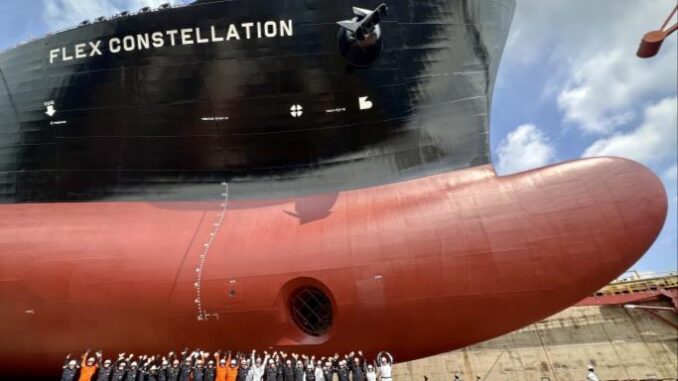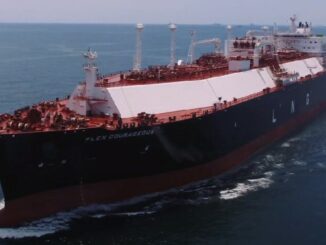
Norwegian LNG carrier owner Flex LNG reported higher net income and lower revenue in the first quarter of this year.
The owner of 13 LNG carriers said on Thursday that vessel operating revenues were $90.2 million for the January-March period, a drop compared to $92.4 million in the first quarter last year and from $97.2 million in the prior quarter.
Compared to the prior quarter, the decrease in revenue was primarily due to a seasonal decrease in the spot market rates which affected the variable rate hire contract for the LNG carrier Flex Artemis, the shipping company controlled by billionaire John Fredriksen said.
On the other said, the company’s net income of $33.2 million in the first quarter doubled compared to $16.5 million in the same quarter last year, and it also rose compared to $19.4 million in the prior quarter.
Average time charter equivalent (TCE) rate was $76,539 per day in the first quarter of 2023, and compares to $81,114 per day in the fourth quarter and $80,175 per day in the first quarter of 2023.
Flex LNG a declared a dividend for the first quarter of $0.75 per share.
Flex LNG has 12 LNG carriers on fixed hire time charters, including to US LNG exporter Cheniere, while the LNG carrier Flex Artemis trades in the spot market.
The company recently secured a new charter deal with a “large Asian LNG importer” for the 2019-built 173,400-cbm, Flex Constellation, the company’s fourth contract so far this year.
In April, Flex LNG clinched a time charter extension from US LNG exporter Cheniere for its 2018-built 173,400-cbm LNG carrier, Flex Endeavour.
Prior to this, Flex secured two charter extensions from UK-based energy giant BP for the 2019-built 173,400-cbm, Flex Courageous, and the 2020-built 173,400-cbm LNG carrier, Flex Resolute.
CEO Øystein Kalleklev said Flex LNG’s first quarter results came in “as expected with revenues in line” with guidance of about $90 million.
He said revenue came in $7 million lower than during the fourth quarter of 2023, but this was “as expected as we recorded lower earnings on the single ship, Flex Artemis.”
“The fourth quarter is typically the peak of the LNG freight market, so we tend to generate higher earnings for this ship during this quarter compared to first quarter. Additionally, we took one ship, Flex Constellation, out of service for scheduled drydocking,” he noted.
Flex Constellation was redelivered from a time charter to Flex LNG in March and the company then elected to carry out the five-year special survey of the ship before putting the vessel into the spot market.
“However, as communicated in our fourth quarter report in February, we expected somewhat more challenging freight market near term due to the glut of newbuilding deliveries. Hence, we deemed it more attractive for us to charter-out the ship until 2025 possibly to 2026 rather than trading her in the spot market given the numerous ships currently engaged in this trade,” Kalleklev said.
“Given our backlog of an average of four years per ship, our ships will come open in a window where we consider the market balance to be significantly more favorable as the third wave of LNG is coming on stream from end of 2025 onwards. Furthermore, we also expect a substantial uptick in scrapping of older steam tonnage, which are becoming commercially obsolete, and this will further improve market fundamentals,” Kalleklev said.



